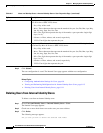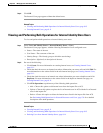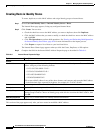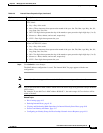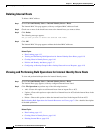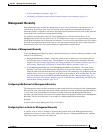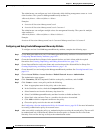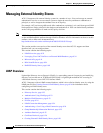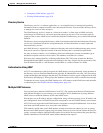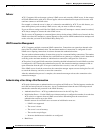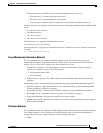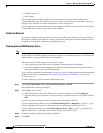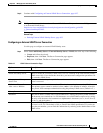
8-22
User Guide for Cisco Secure Access Control System 5.3
OL-24201-01
Chapter 8 Managing Users and Identity Stores
Managing External Identity Stores
Managing External Identity Stores
ACS 5.3 integrates with external identity systems in a number of ways. You can leverage an external
authentication service or use an external system to obtain the necessary attributes to authenticate a
principal, as well to integrate the attributes into an ACS policy.
For example, ACS can leverage Microsoft AD to authenticate a principal, or it could leverage an LDAP
bind operation to find a principal in the database and authenticate it. ACS can obtain identity attributes
such as AD group affiliation to make an ACS policy decision.
Note ACS 5.3 does not have a built-in check for the dial-in permission attribute for Windows users. You must
set the msNPAllowDialin attribute through LDAP or Windows AD. For information on how to set this
attribute, refer to Microsoft documentation at:
http://msdn.microsoft.com/en-us/library/ms678093%28VS.85%29.aspx
This section provides an overview of the external identity stores that ACS 5.3 supports and then
describes how you can configure them.
This section contains the following topics:
• LDAP Overview, page 8-22
• Leveraging Cisco NAC Profiler as an External MAB Database, page 8-34
• Microsoft AD, page 8-41
• RSA SecurID Server, page 8-54
• RADIUS Identity Stores, page 8-60
LDAP Overview
Lightweight Directory Access Protocol (LDAP), is a networking protocol for querying and modifying
directory services that run on TCP/IP and UDP. LDAP is a lightweight mechanism for accessing an
x.500-based directory server. RFC 2251 defines LDAP.
ACS 5.3 integrates with an LDAP external database, which is also called an identity store, by using the
LDAP protocol. See Creating External LDAP Identity Stores, page 8-26 for information about
configuring an LDAP identity store.
This section contains the following topics:
• Directory Service, page 8-23
• Authentication Using LDAP, page 8-23
• Multiple LDAP Instances, page 8-23
• Failover, page 8-24
• LDAP Connection Management, page 8-24
• Authenticating a User Using a Bind Connection, page 8-24
• Group Membership Information Retrieval, page 8-25
• Attributes Retrieval, page 8-25
• Certificate Retrieval, page 8-26
• Creating External LDAP Identity Stores, page 8-26



